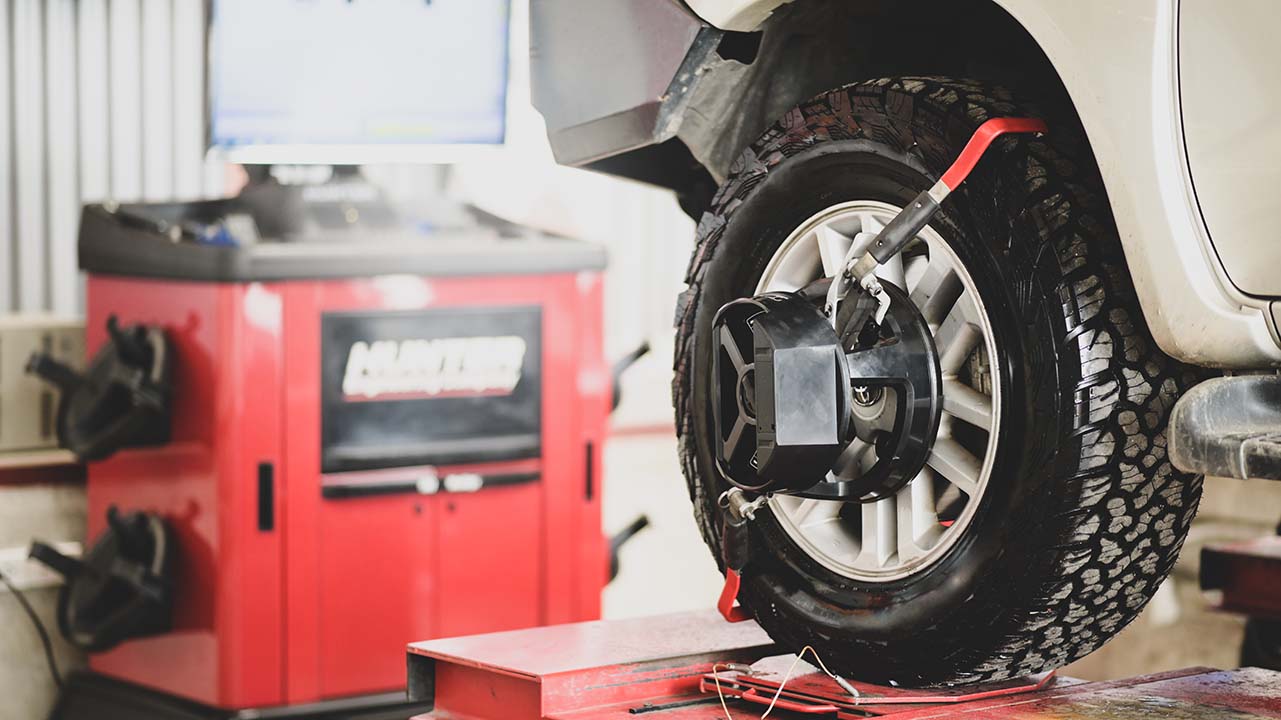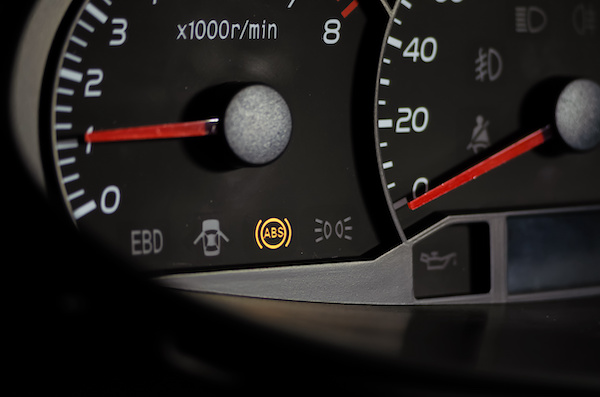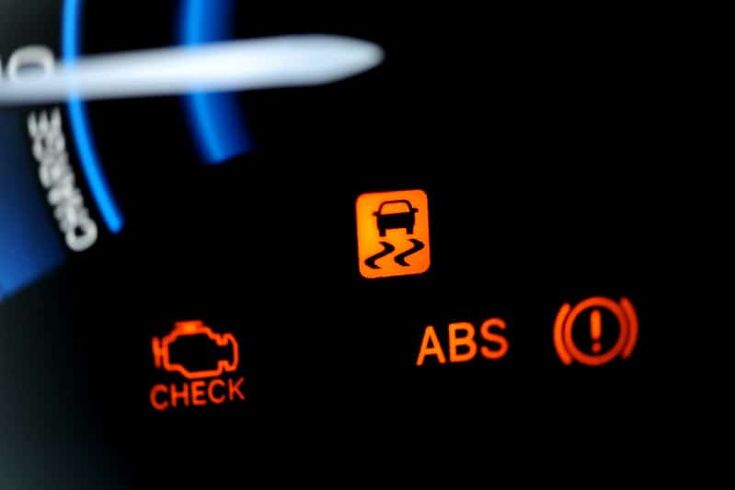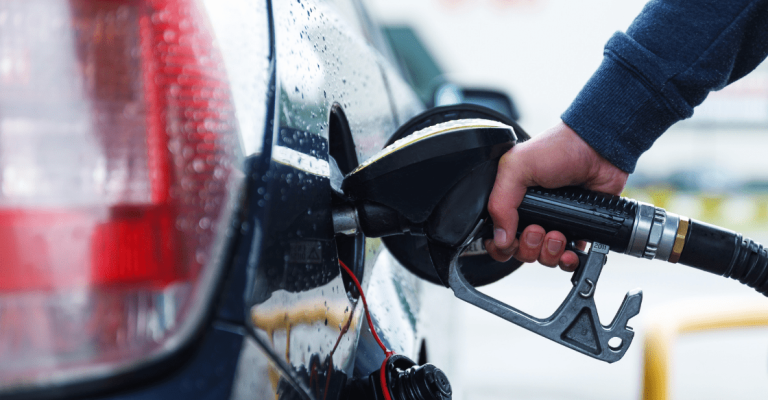What Does ABS Mean On A Car?
ABS, or Anti-lock Braking System, is a critical safety feature in modern vehicles. It helps prevent the wheels from locking up during hard braking, allowing the driver to maintain steering control and avoid skidding. This system is particularly useful in slippery conditions or during sudden stops. In this post, we will find out how ABS works, its benefits, and why it has become a standard component in car safety technology, enhancing driver control and reducing the chances of accidents.

What Does ABS Mean On A Car?
ABS in a vehicle represents the term “Antilock Braking System”. This crucial system enhances your safety while driving, primarily during heavy braking sequences. Before the inception of ABS, vehicles faced a high chance of wheel lock-up under hard braking conditions. Wheel lock-up might result in skidding, compromising the control you have over your car.
In light of this potential danger, the ABS was devised to prevent such incidents. This system aids in retaining vehicle steering control in instances requiring sudden brake application. It prevents the wheels from locking up or skidding, enabling more effective and safer braking.
So when your car’s ABS is functional, it provides increased control, and can potentially prevent a terrible mishap from skidding. Therefore, any signs like the ABS light illuminating or a noticeable change in brake responsiveness shouldn’t be brushed aside. These might be indications that your car’s ABS needs attention or replacement. Instead of risking your safety, address the problem immediately to ensure the ABS works as intended, providing a safer, smoother driving experience.
How Does ABS Work?
ABS stands for Anti-Lock Braking System. It’s a crucial safety feature in most modern cars and helps prevent wheels from locking up during hard braking situations. Here’s a breakdown of how ABS works:

-
Wheel Speed Monitoring: Each wheel of your car has a sensor that constantly tracks its rotational speed.
-
Locking Detection: When you slam on the brakes, the ABS system monitors the rapid decrease in wheel speed. If a sensor detects a wheel about to stop spinning (indicating a potential lockup), it sends a signal to the ABS control unit.
-
Pressure Modulation: The ABS control unit is the brain of the system. Upon receiving a lockup signal, it rapidly reduces brake pressure on the affected wheel. This prevents the wheel from completely stopping and allows it to continue rotating.
-
Maintaining Control: With the wheel still rotating, you retain steering control. This is crucial because a locked wheel skids, causing the car to lose traction and become harder to maneuver.
-
Pressure Re-application: The ABS control unit constantly monitors the wheel speed. Once the sensor detects the wheel regaining rotational speed and no longer at risk of locking, it reapplies the optimal braking pressure. This rapid pulsing of brake pressure (can be up to 20 times per second) is what you might feel in the brake pedal during hard ABS activation.
Benefits of ABS:
- Maintains Steering Control: Being able to steer during hard braking is essential for avoiding obstacles and maneuvering around hazards.
- Shorter Stopping Distances: In some situations, ABS can actually help reduce stopping distances by preventing wheel lockup and skids.
- Improved Stability: ABS helps keep the car stable during emergency braking, preventing it from going into a spin.
Why the ABS Light Could Be On?
If the ABS (Anti-lock Braking System) light on your car’s dashboard is illuminated, it indicates there’s a problem with the ABS that needs attention. Here are several common reasons why the ABS light could be on:

1. Malfunctioning Wheel Speed Sensors
Wheel speed sensors are crucial for the ABS to function correctly, as they monitor the speed of each wheel and send this data to the ABS control module. If a sensor is damaged, dirty, or has failed, it can’t provide accurate data, causing the ABS light to turn on.
2. ABS Module Issues
The ABS module, which controls the system based on information from the sensors, can experience faults due to electrical issues like short circuits, or physical damage. Problems with the module can disrupt the operation of the ABS, triggering the warning light.
3. Low Brake Fluid Levels
ABS systems rely on proper hydraulic pressure to function. If your brake fluid is low, possibly due to a leak or insufficient maintenance, the ABS system won’t operate effectively, and the warning light may come on.
4. Faulty ABS Pump or Valves
The ABS pump and valves regulate the pressure to the brakes during ABS engagement. If there’s a malfunction in these components, the system’s ability to prevent wheel lockup is compromised, leading to the activation of the ABS light.
5. Wiring Issues
Wiring that connects the sensors and the ABS module may become damaged, corroded, or disconnected, leading to malfunctions in the system. Any wiring problems can result in the ABS light turning on due to poor signal transmission.
6. Blown Fuse
A blown fuse associated with the ABS system can lead to a failure of the system to operate, triggering the ABS light. Checking and replacing any blown fuses can resolve this issue.
7. System Resets and Errors
Sometimes, the ABS light might come on due to a temporary malfunction and may reset itself once the vehicle is restarted. However, if the light stays on, it indicates a persistent issue.
What to Do If Your ABS Light is On?
If your ABS light is on, it’s important to address the issue promptly:

- Check Brake Fluid Levels: Make sure the brake fluid is at the recommended level and refill if necessary.
- Scan for Codes: Use an OBD (On-Board Diagnostics) scanner to read any fault codes from the ABS module, which can help pinpoint the issue.
- Inspect Sensors and Wiring: Look for any visible signs of damage or disconnection in the sensors and wiring.
- Consult a Professional: If the problem isn’t immediately apparent, or if it involves complex components like the ABS module or pump, it’s advisable to take your vehicle to a qualified mechanic.
Driving with the ABS light on doesn’t mean your brakes will fail, but it does mean the ABS might not function in an emergency, which could increase the risk of a skid during hard braking. Therefore, it’s advisable to get it checked and repaired as soon as possible.
Is It Safe to Drive with the ABS Light On?
It’s generally not recommended to drive with the ABS light on, but in some cases it might be okay for a short distance. Here’s a breakdown of the risks and considerations:
Risks of Driving with ABS Light On:
- Reduced Braking Performance: Without ABS, your wheels are more prone to locking up during hard braking, which can lead to:
- Loss of Steering Control: Locked wheels cause the car to skid, making it difficult to steer around obstacles.
- Increased Stopping Distances: Skidding tires reduce grip on the road, potentially lengthening stopping distances.
- Greater Risk of Accidents: All of the above can significantly increase your risk of getting into an accident.
When Might It Be Okay to Drive a Short Distance?
- If the light just came on: In some cases, the ABS light might come on due to a temporary sensor glitch. If this just happened and you can safely pull over to a mechanic nearby, it might be okay to drive that short distance.
- Need to get to a safe location: If you’re stranded on the side of the road or in an unsafe location, you might need to drive a short distance to reach a repair shop, but prioritize safety and drive slowly with extra caution.
Frequently Asked Questions
How do I fix my car’s ABS?
Usually, try restarting your vehicle first, as this could possibly rectify any minor issues by rebooting the computer. Also, inspect the fuse panel for any defective ABS fuses and replace as necessary. Lastly, if you possess the tools and mechanical expertise, consider removing each tire to clean every ABS sensor.
Does worn out brake pads trigger the ABS light?
Yes, an indirect cause could be worn brake pads. Worn out brake pads can deplete brake fluid levels, which in turn, can activate the ABS light on your car’s dashboard.
Is it safe to drive with the ABS light on?
In most cases, it is safe to drive even with the ABS light illuminated. Your car’s brakes will continue functioning normally. However, remember that under heavy braking, your vehicle’s tires might lock, thereby limiting your maneuverability during emergencies.
Can I continue driving when the ABS light is on?
Yes, if the ABS light turns on alone, you can safely drive your car to your destination, since your normal braking system will continue to function correctly. But remember, during an emergency, your ABS will not intervene, so you must exercise caution.
What happens if the ABS issue is not rectified?
Not repairing your ABS may risk wheel lock-up and loss of steering control, particularly, on slippery surfaces during winter. Essentially, without a properly functioning ABS, your vehicle behaves as if it is not equipped with this system, resulting in diminished control.

Hi! I’m Larry Gibbs, studying mechanical engineering with a focus on cars. I really love Ferraris and write blog posts about the latest car stuff. When not studying or blogging, I’m usually on a road trip exploring new places. I also enjoy playing football and watching movies. Life’s an adventure, and I’m all about enjoying the ride!






